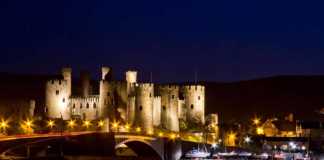Poland’s capital, Warsaw, is in the centre of the country and is its economic, cultural and political heart. Poland is one of the European Union’s largest countries, with a population approaching 40 million. At various times in history, large areas of what is now Poland were partitioned by neighbouring countries, with the Poland we know today only gaining full independence in 1918. In the 16th century, King Sigismund III moved his court from Kraków. So, many of the interesting things to do in Warsaw are historical.
Warsaw’s real growth occurred during the 19th-century Industrial Revolution, as it became one of Europe’s most densely populated cities. The Second World War devastated Warsaw, with much of the centre bombed relentlessly. For years afterwards, its communist regime looked to the USSR until the “Solidarity” movement became a catalyst for the rejection of communism. Despite the bombing and the time under Moscow’s control, Warsaw offers a charming ambience with beautiful boulevards and architecture.
Contents
- Warsaw, Poland
- Top Tours
- 20 Things To Do In Warsaw
- 1- Take A Convenient City Tour
- 2- Discover The Palace Of Culture
- 3- Feel Sad On A Concentration Camp Tour
- 4- See The Birthplace Of Chopin
- 5- Eat Dinner In The Dark
- 6- Visit The Jewish Quarter
- 7- Listen To A Chopin Concert
- 8- Learn To Make Dumplings
- 9- Drink At The Polish Vodka Museum
- 10- Enjoy A City Pub Crawl
- 11- Party On The Vistula River
- 12- Learn The Stories Behind Polish Food
- 13- Marvel At Bison
- 14- Enjoy Lazienki Park
- 15- Think About What You See
- 16- See Wilanow Palace & Gardens
- 17- Travel In The Polish Countryside
- 18- Explore The Royal Castle
- 19- Experience Warsaw’s Dark Side
- 20- Take The City Ghost Tour
Warsaw, Poland
Top Tours
- Warsaw Hop-On Hop-Off Bus Tour – a perfect way to see many sights.
- Warsaw: Skip-the-Line Royal Castle Guided Tour – do not miss this attraction.
- Warsaw Afternoon Public City Tour – a great way to get to know the city through the eyes of a local.
20 Things To Do In Warsaw
1- Take A Convenient City Tour
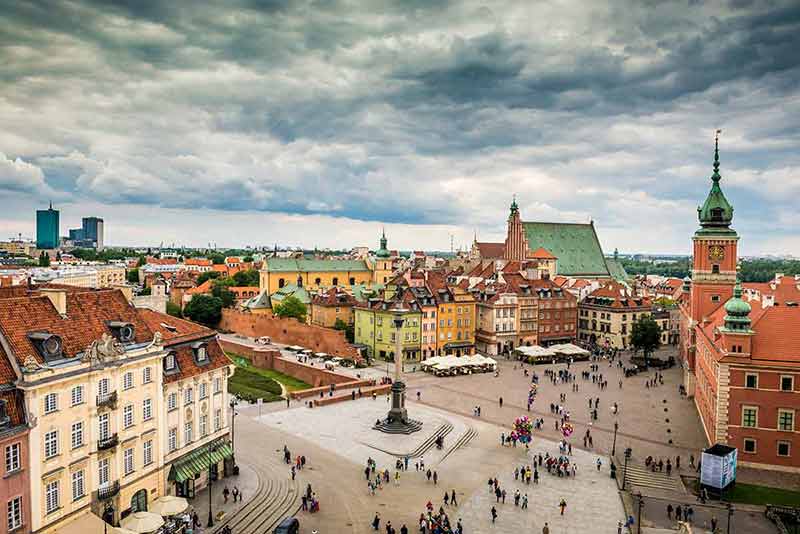
A guided coach tour around Warsaw is an excellent way to get familiar with the city and identify landmarks you’d like to look at more closely later.
The Old Town is a UNESCO World Heritage Site, with your route taking in Castle Square, the Royal Palace, home to the monarchy for two centuries and the Praga District.
King Sigismund’s III Column is the first national secular monument, while the Gothic St. John’s Cathedral is where many famous Poles are buried.
The Jewish Ghetto, the Holy Cross Church, the Tomb of the Unknown Soldier and Lazienk Park are among other things you will see.
2- Discover The Palace Of Culture
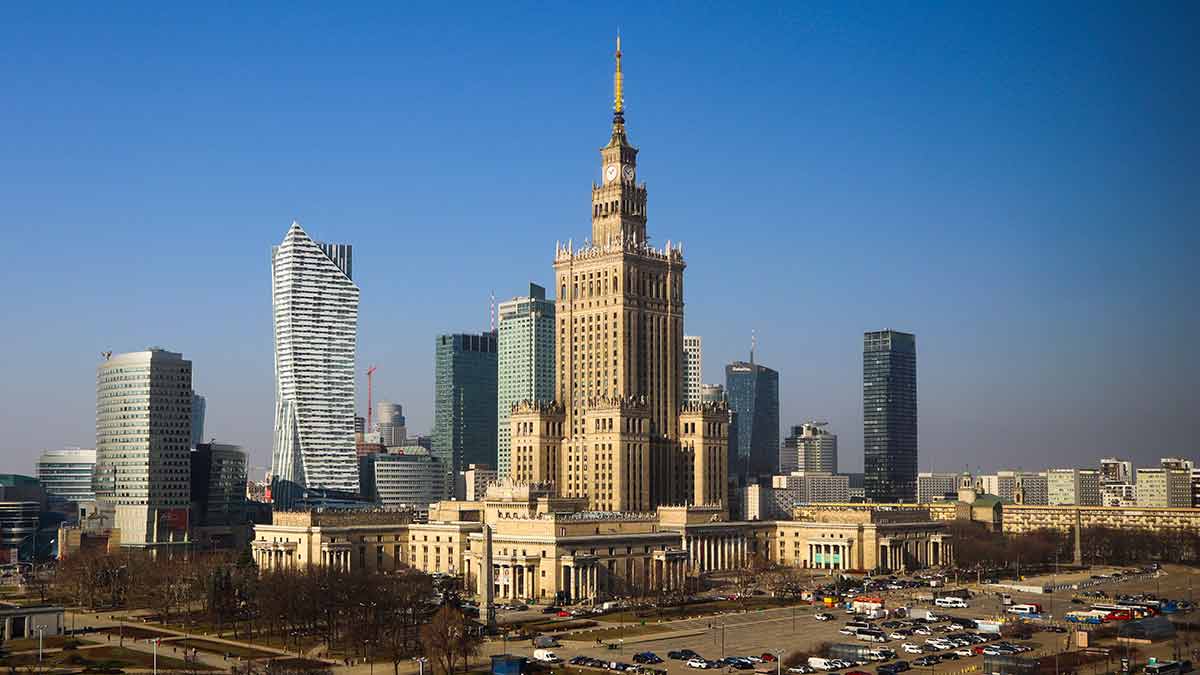
The Palace of Culture and Science is visible from most parts of Warsaw, a magnificent structure built on high, offering incredible panoramas of the city from the terrace on the 30th floor.
The palace has magnificent ballrooms with splendid woodwork, conference rooms with furniture and equipment from the ’50s, and wonderful marble staircases.
Your local guide will give you the history of the building from its construction in 1952 to the present day with anecdotes and amusing stories.
3- Feel Sad On A Concentration Camp Tour
Treblinka, the largest Nazi camp in Europe, is an hour away from Warsaw.
Almost two million people died here and in Auschwitz-Birkenau, just outside Krakow.
Treblinka is both impressive as well as touching.
There is a field full of stones and in its centre is a monument, “The Victims of Holocaust”.
You will also see the “Never Again” stone, dedicated to Janusz Korczak, a famous Jewish Pole, doctor, author and teacher who died at Treblinka in 1942.
He was a strong Koncak advocate of children’s rights and ran an orphanage for many years until his removal to Treblinka.
It’s a somewhat sombre day out but a poignantly memorable experience. Book your tour here.
4- See The Birthplace Of Chopin
Chopin is among the world’s best composers and arguably the most famous Pole.
Even if classical music does not interest you, a trip to his birthplace of Żelazowa Wola, an hour from Warsaw, travelling in a Mercedes van, is a lovely day out.
You will see the manor house where he was born in 1810, which is now a museum and part of a complex with a concert hall, a further glass pavilion, and gardens with a pond and rare plants.
There’s time to explore before heading to another small village, Brochów, to visit the Church of Saint John the Baptist.
Chopin was baptised in this church, an architectural treasure on the banks of the Bzura River.
5- Eat Dinner In The Dark
Polish cuisine in a “dark restaurant” will test your taste buds, typical national dishes, and three courses.
The only thing gloomy here is the light levels.
The idea is to concentrate on your taste buds and sense of smell when your eyes cannot see what you are eating.
Top professional chefs prepare the dishes with the aim of testing your senses other than sight.
Until you go, you may not appreciate the difference lack of light makes to your enjoyment of a meal.
Are you intrigued? Well, go ahead and book!
6- Visit The Jewish Quarter
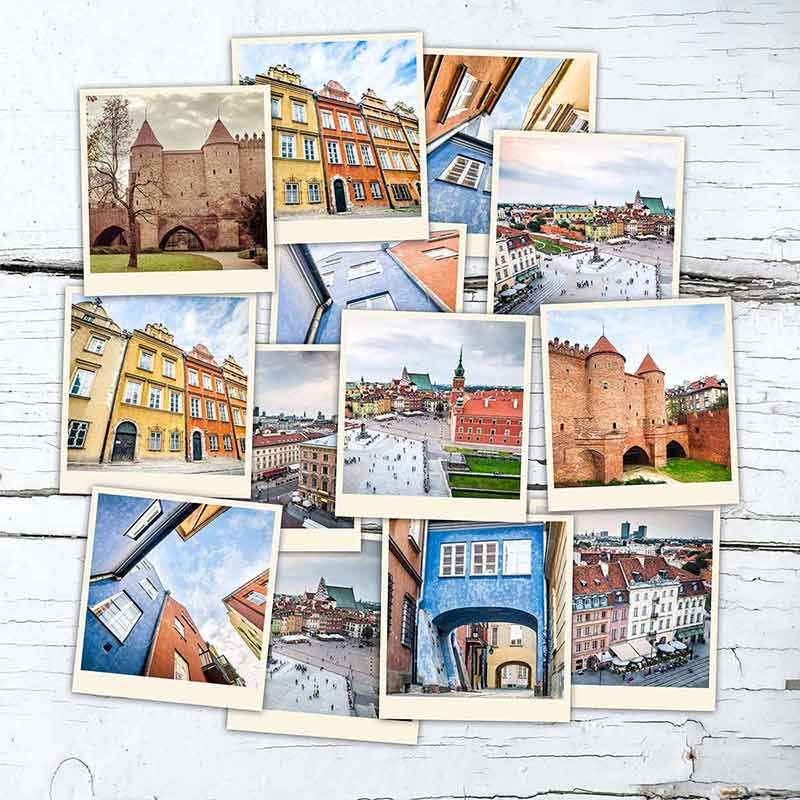
Warsaw Jewish Ghetto is a moving place where an experienced guide will talk about Jewish culture, and the experiences Jews in Poland have had, especially during Nazi times.
You will walk the streets of the neighbourhood and see the homes where families lived in these oppressive times in the Second World War.
More than 400,000 Jews were confined in 4 square kilometres (1.5 square miles).
100,000 died from various conditions, with the rest sent, then killed, in Treblinka.
The Jewish Cemetery is also on the day’s schedule.
7- Listen To A Chopin Concert
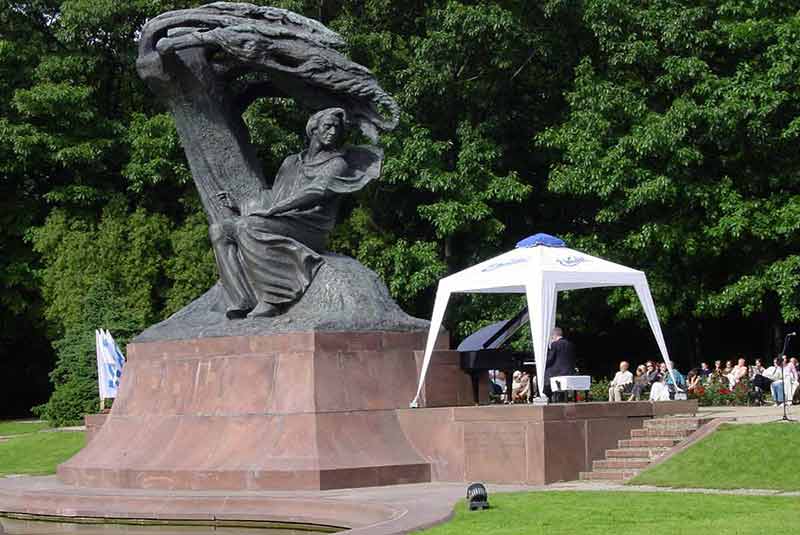
A Chopin concert is performed daily by a series of different pianists.
Frederic Chopin is Poland’s favourite son, and the interpretation of his music by different pianists is a joy.
His music was designed for the piano, which was the instrument Chopin excelled in.
Chopin died in Paris, the city where he spent most of his life before reaching the age of 40.
Performances take place in the Old Town and if you are familiar with Chopin’s compositions, you will delight in the different interpretations you will hear.
There is usually the opportunity to talk to the artists involved at the end of the concert.
8- Learn To Make Dumplings
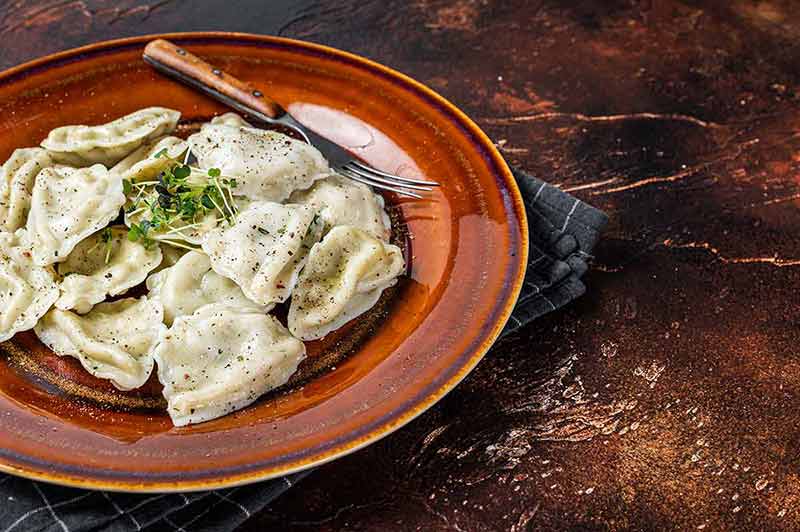
The most popular dish in Poland, known for its hearty cuisine, is pierogi.
Dumplings are Polish “comfort food” with fillings of your choice, whether meat, vegetarian or vegan.
After a short introduction, go ahead and start making your dough under the watchful eye of a professional.
The filling alternatives are all there to make your choice.
There are different ways to fold dumplings before you cook them.
Eating your productions is the final piece of this experience, and if you take a class in the evening, you will get a complimentary alcoholic drink as well.
9- Drink At The Polish Vodka Museum
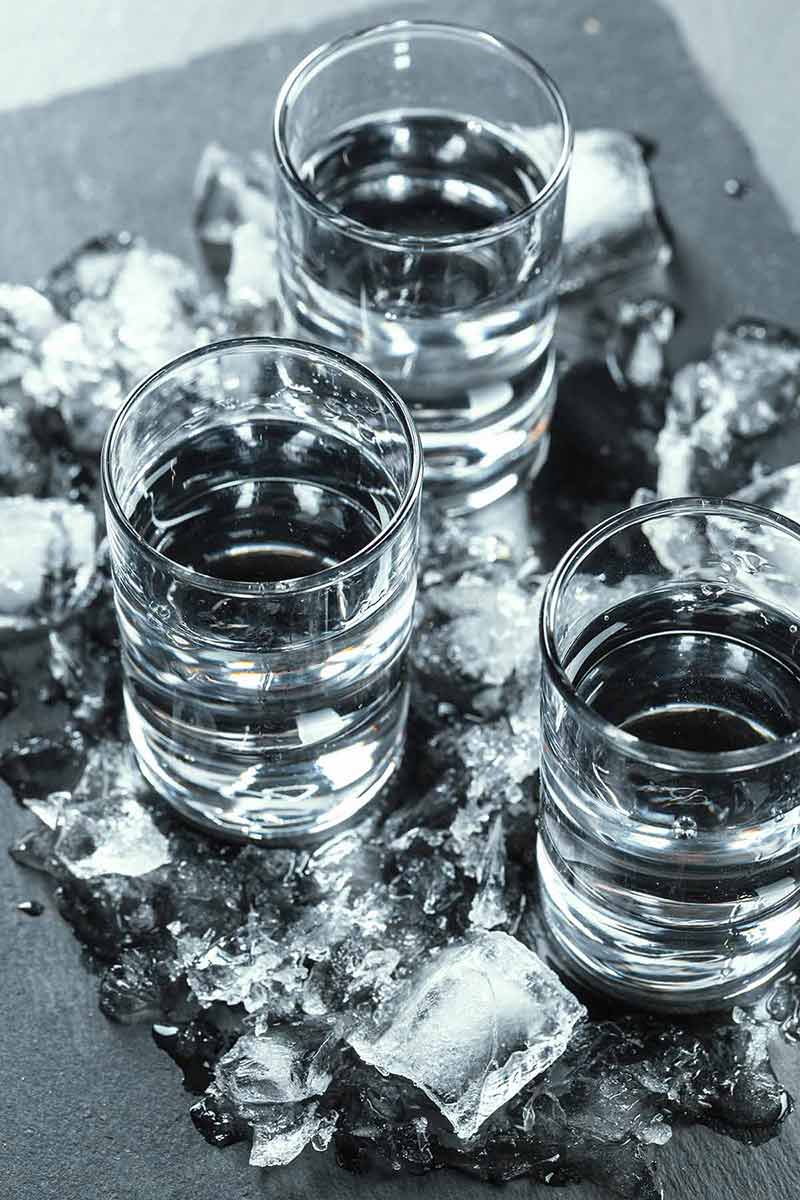
You can learn about Poland’s most popular alcoholic drink and sample it, if you head to the Polish Vodka Museum.
The museum is in the Praga neighbourhood of Warsaw and you can listen to a former employee at the Warsaw Vodka Factory at Koneser.
Five interactive modern galleries will ensure you know plenty about the history of this popular spirit once you have seen them all.
A short tasting session follows before you head to the 3/4 Koneser Cocktail Bar on the museum’s 3rd floor.
Vodka is a major base for many cocktails, and here is the chance to try some. Skip the line and reserve your ticket here.
10- Enjoy A City Pub Crawl
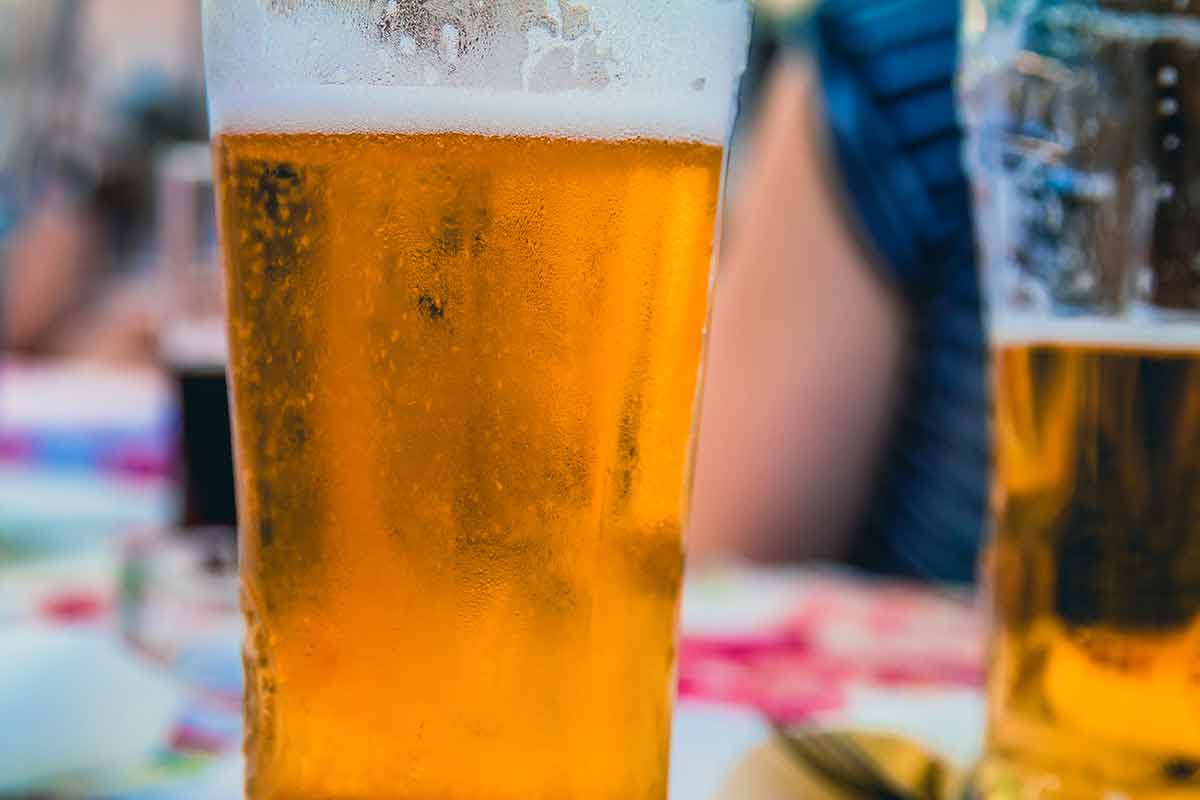
A fun way to meet new friends is to go on a group pub crawl, where a local guide will advise you on the best beer, wine and drinking places.
After hanging around the first spot for an hour, play a few games and get to know one another, you’ll head out to three different pubs, getting a free shot in each of them.
Once you’re in the mood, you can head off to a nightclub with VIP entry and no lines.
Clubs close late, and if you’re in the mood for dancing, Warsaw is the right city.
11- Party On The Vistula River
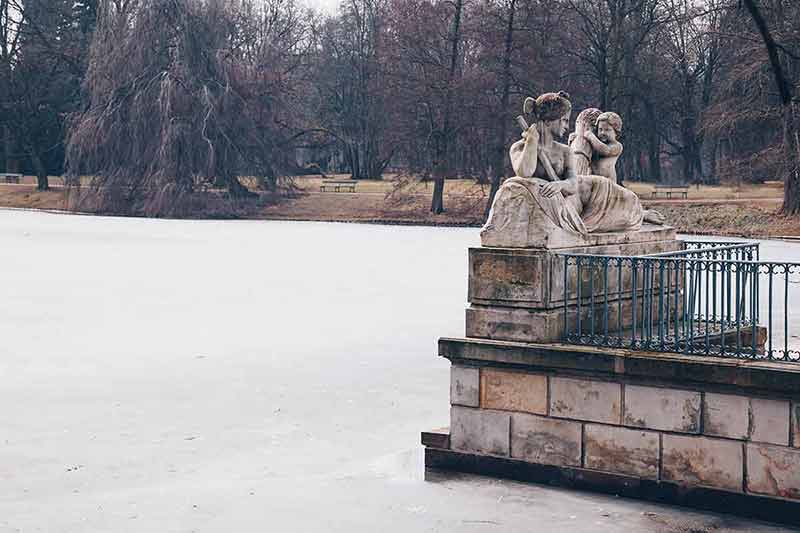
Poland’s longest river, the Vistula River, rises south and west of Krakow, going through that city and Warsaw on its route to the sea.
You can get a different perspective of Warsaw when you cruise on the river, seeing various landmarks on either bank.
This cruise involves far more than sightseeing; it is party time!
Two hours with an open bar, music and games create that party.
It is a great way to begin an evening out, but it does not finish when you disembark.
You will get a wristband that gives you free entry to Room 13, one of Warsaw’s top nightclubs.
12- Learn The Stories Behind Polish Food
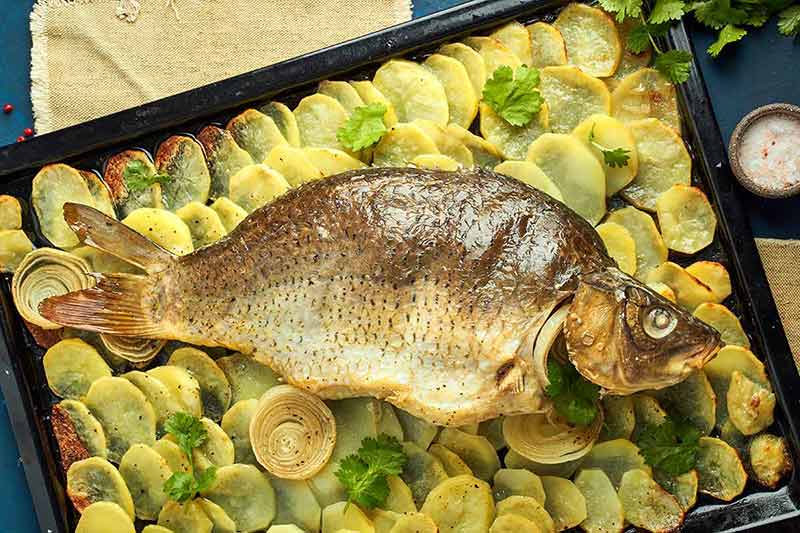
If you want to sample Polish dishes that are less well-known than pierogi, take this four-hour food tour and get an in-depth view of national cooking and the stories behind the dishes you will sample.
You will also hear about the claims that Polish bread is not as good as it once was and that food in Warsaw half a century ago was better than it is today.
An invitation for “a cup of coffee” is suspicious, and you will find out why.
You’ll be doing some walking, but you will also eat the equivalent of a full dinner with dessert.
There are plenty of calories to consume, but you can walk some off at the same time. Remember comfortable shoes for this one.
13- Marvel At Bison

If you have a decent break in Warsaw, it is a nice change to spend a day out of the city, especially if you are interested in wildlife.
Poland has some species that are no longer around in many European countries.
The bison is one of them, and you will get to see these huge beasts if you book a tour to the Białowieża National Park.
The forests hold diverse fauna to the extent that the park is now a UNESCO World Biosphere Reserve.
Within the forests, you will be walking, looking at several species of trees as you go.
The park has the largest bison population in Europe, with only 3,000 living in the world, of which 1,200 live in Poland.
14- Enjoy Lazienki Park
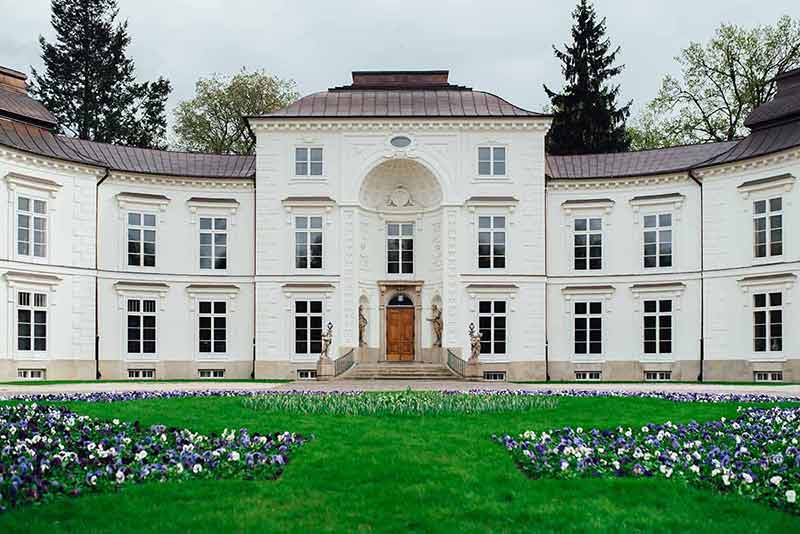
Lazienki Park in Warsaw is an excellent opportunity to enjoy the city’s greenery away from the crowds.
It is an interesting place at any time of the year, especially pretty with autumn colours before the leaves fall from the trees.
Winter sees it covered in snow, a real winter wonderland, while spring sees the early growth after a cold winter.
The park covers 80 hectares (197 acres) with plenty to explore.
A guide can show you the best places within the park, including the amphitheatre, the palace on an island, and the New Orangery.
The park is central within the city and links the Royal Palace to Wilanow Palace.
It is a place where there are regular events such as music and cultural events.
15- Think About What You See
The Museum World of Illusion in Warsaw will get you wondering whether you have actually seen something that has appeared in front of your eyes.
It is worth booking tickets in advance to avoid the lines at busy times because it is a place everyone of all ages will enjoy.
There are plenty of interactive exhibits, holograms and mirrors.
As the name suggests, its speciality is an optical illusion, where seemingly the laws of physics are defied.
Take your camera and take some shots so that you can look at them after you leave.
The museum has more than 60 attractions, including the Vortex Tunnel and a Mirror Room.
16- See Wilanow Palace & Gardens
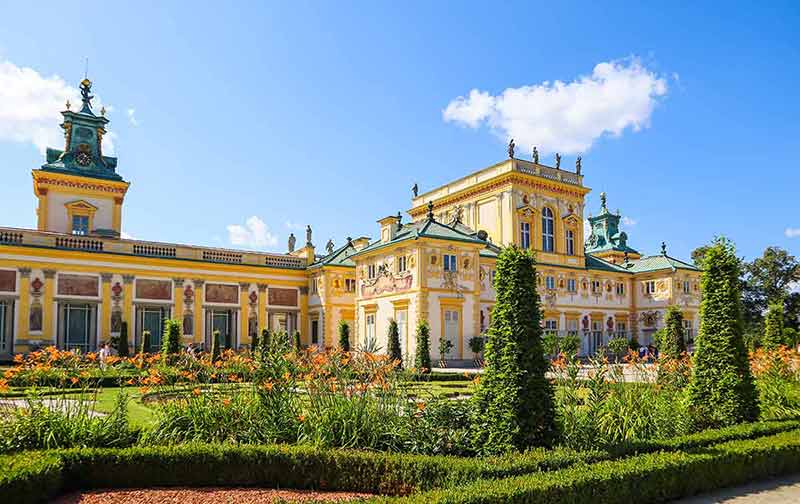
Wilanow Palace has been described as “The Little Versailles” and is one of Warsaw’s monumental highlights.
In its time, it has survived several crises, the partitions and especially the Second World War.
It was originally the summer palace of King John III Sobieski in the final quarter of the 17th century.
Its typical baroque design reveals imaginative and original architecture.
It blends European and traditional Polish techniques.
It was in private ownership for many years after the king died.
Enjoy the decorative interior and the landscaped gardens following French styles.
While art was stolen from it at the end of the War, it was recovered and the museum reopened in 1962. Book your entry ticket here.
17- Travel In The Polish Countryside
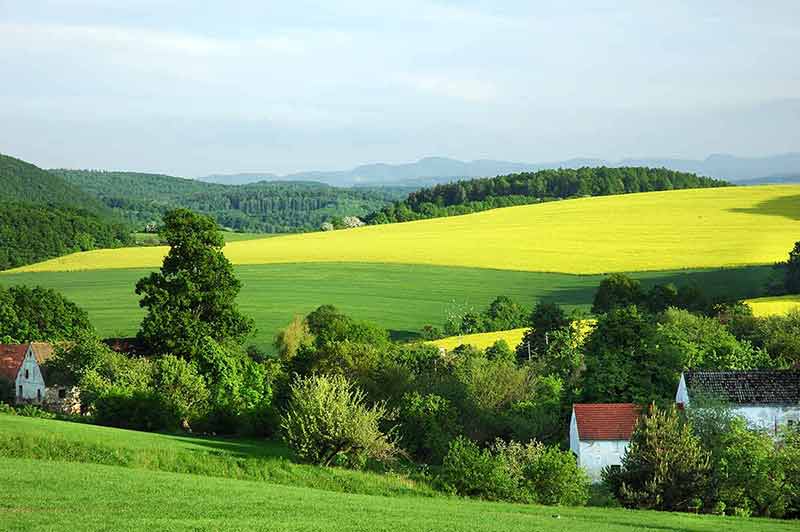
Łowicz is around one hour from Warsaw and its ethnographic park is worth visiting.
You will find colourful wooden houses, home to the local peasants in the 18th and 19th centuries.
Effectively, it is a reconstruction of a traditional Polish village of those times.
Explore before tucking into typical Polish fare for lunch at a local restaurant.
The nearby gardens are lovely, a great place to walk off your meal.
Arkadia Gardens was made for Princess Helena Radziwiłł, whose home, the 17th-century Nieborów Palace, is the next stop on this tour.
It is filled with lovely art, stunning furniture and royal portraits. Join this tour of the Polish countryside.
18- Explore The Royal Castle
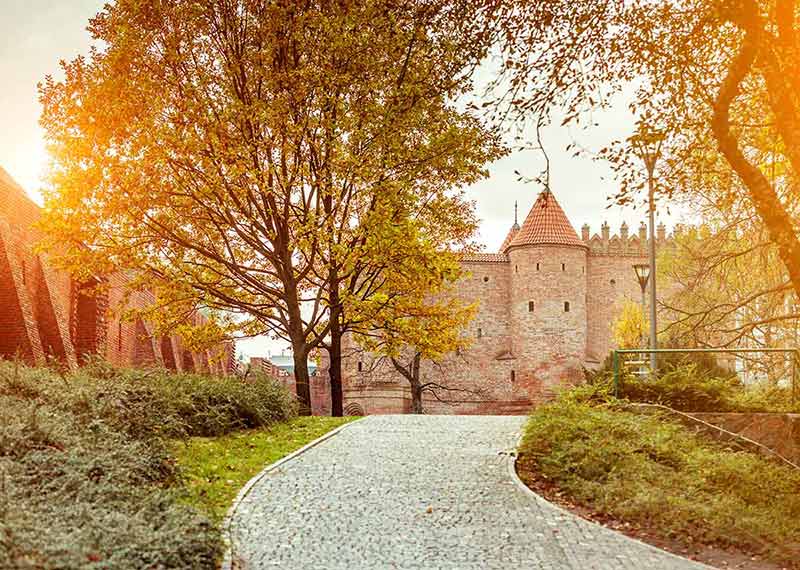
The Royal Castle in Warsaw is a baroque-classicist building and a UNESCO World Heritage Site.
Its origins are in the 14th century and you can explore it on a two-hour tour.
You can explore the interior, including the king’s chambers, with its historical paintings and decorations.
It took many years to complete and your guide will relate the story.
Although there have been many changes, it has lost none of its magnificence.
Skip the lines and book your ticket here. If you wish you can extend this tour because the Royal Palace is located at the start of the Old Town where your guide will give you more history of this district.
19- Experience Warsaw’s Dark Side
Every city has its dark side and in Warsaw, it is the district of Praga.
It used to be regarded as the most dangerous neighbourhood in the city and a guide will tell you why.
Today, you can enjoy a marketplace where you can buy almost everything: clothes, diplomas and Kalashnikov rifles are contrasting examples.
A retro bus, Jelcz “cucumber” bus, starts at the Palace of Culture and Science and takes passengers on a tour of Praga with commentary along the way.
Stops include a chocolate factory, the Basilica of the Sacred Heart of Jesus, and a former vodka factory, Konese. Roman Polański filmed “The Pianist” in Praga incidentally.
20- Take The City Ghost Tour
Warsaw has its share of mysteries and ghosts.
Most revolve around the Old Town and a local guide will tell you more as you walk around its streets at night.
It is safe even if you feel nervous about the events that created the mysteries and ghosts.
The stories are not too gruesome that children will be frightened, so don’t worry.
Exploring Eastern Europe? You may also like:
- 20 Landmarks in Bulgaria
- 20 Bulgarian Cities
- 20 Things To Do In Sofia
- 22 Landmarks in Hungary
- 20 Cities in Hungary
- 15 Things Hungary Is Famous For
- 22 Castles in Czech Republic
- 21 Landmarks in Czech Republic
- 20 Things To Do In Prague At Night
- 15 Things To Do In Prague
- 20 Day Trips From Belgrade
- 10 Things To Do In Belgrade
- 20 Cities in Serbia
- 20 Things To Do In Baku
- 20 Slovakian Cities and Towns
- 20 Slovenian Cities and Towns
- 20 Latvian Cities and Towns
- 20 Castles in Poland
- 20 Landmarks in Poland
- 20 Polish Drinks
- 20 Cities in Poland
- 20 Things To Do In Warsaw
- 20 Things To Do In Krakow
- 20 Things To Do In Krakow At Night
- 20 Things To Do In Gdansk
- 20 Castles in Romania
- 20 Landmarks in Romania
- 20 Cities in Romania
- 20 Castles in Belarus
- 20 Things To Do In Tbilisi
- 20 Things To Do In Armenia
- 20 Cities In Armenia
- 20 Things To Do In Riga
- 20 Things Romania Is Famous For
Plan Your Trip
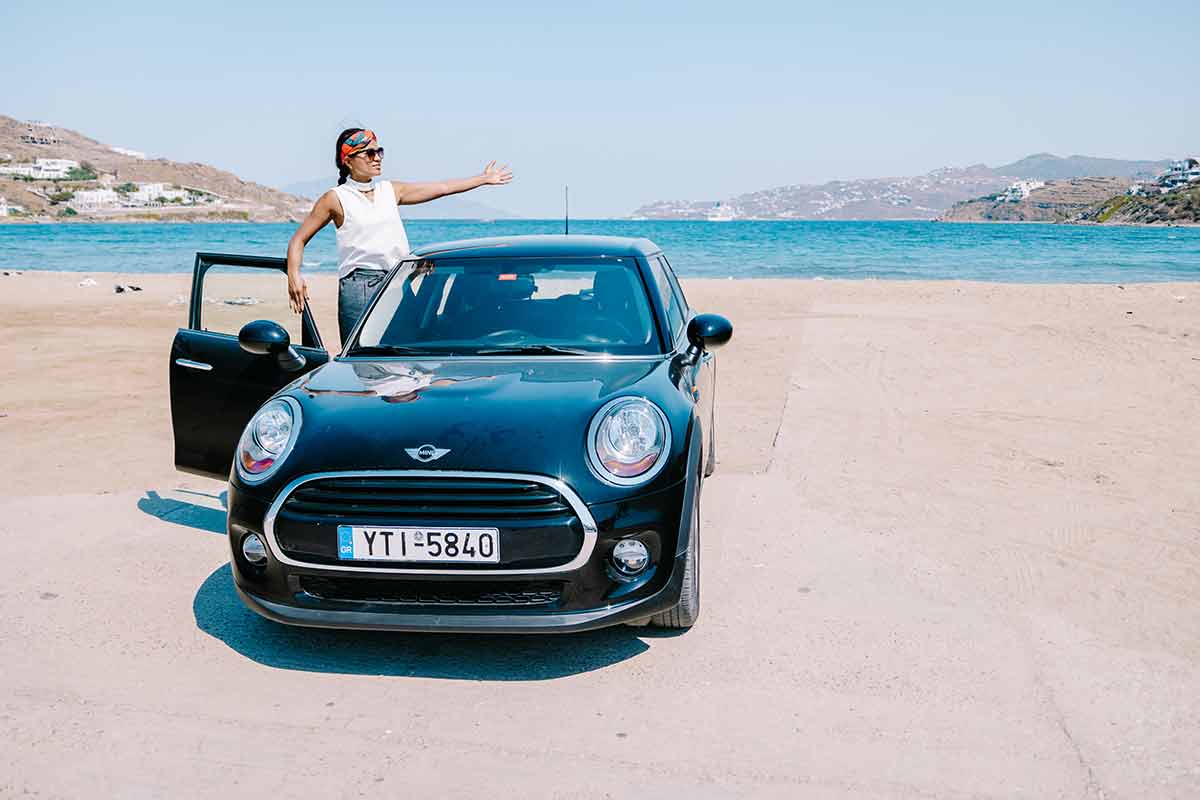
Rent A Car – Find the best car rental rates at Discover Cars. They compare car hire companies to provide you with the best deal right now.

Find A Hotel – If you’re curious about this article and are looking for somewhere to stay, take a look at these amazing hotels.
